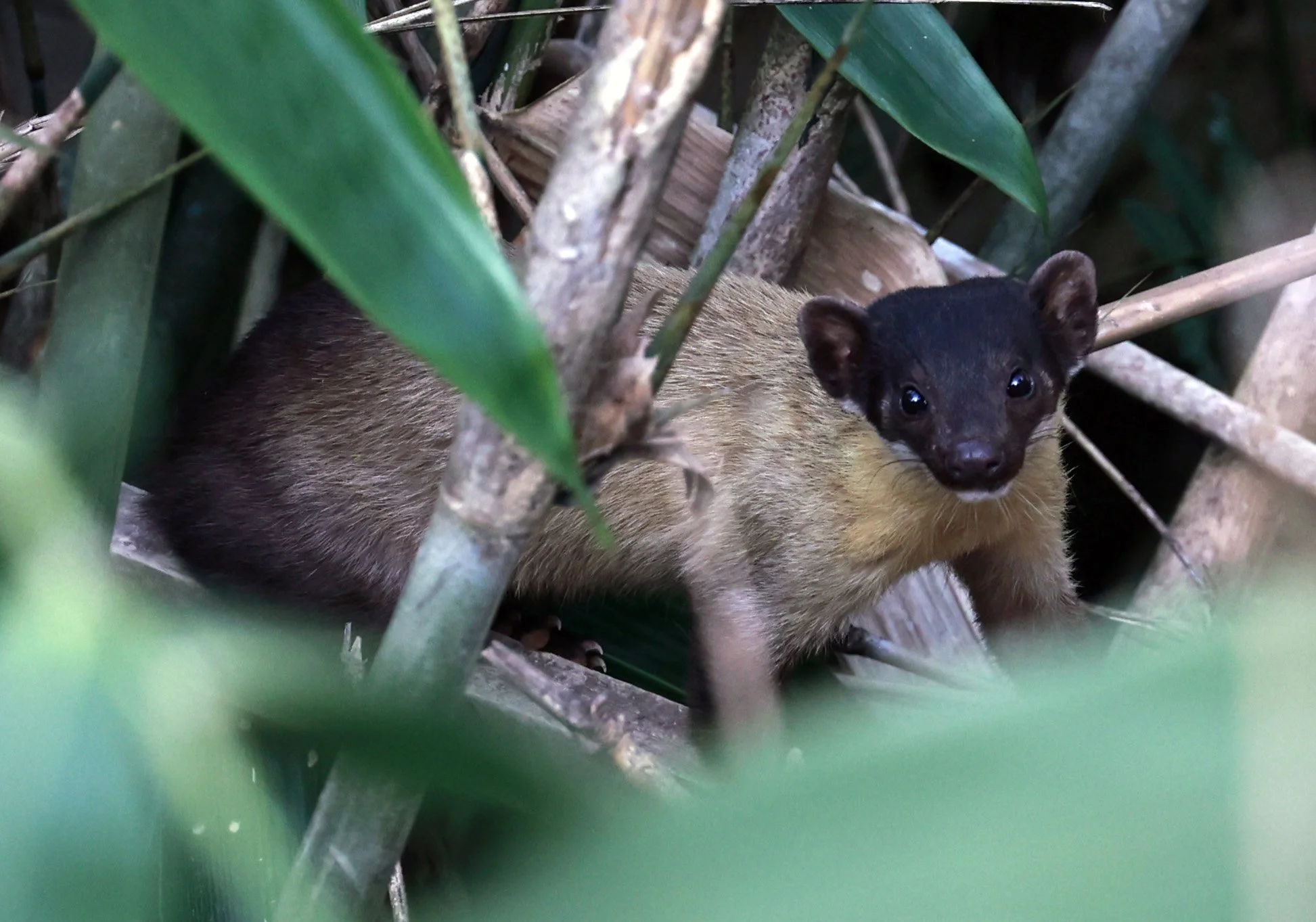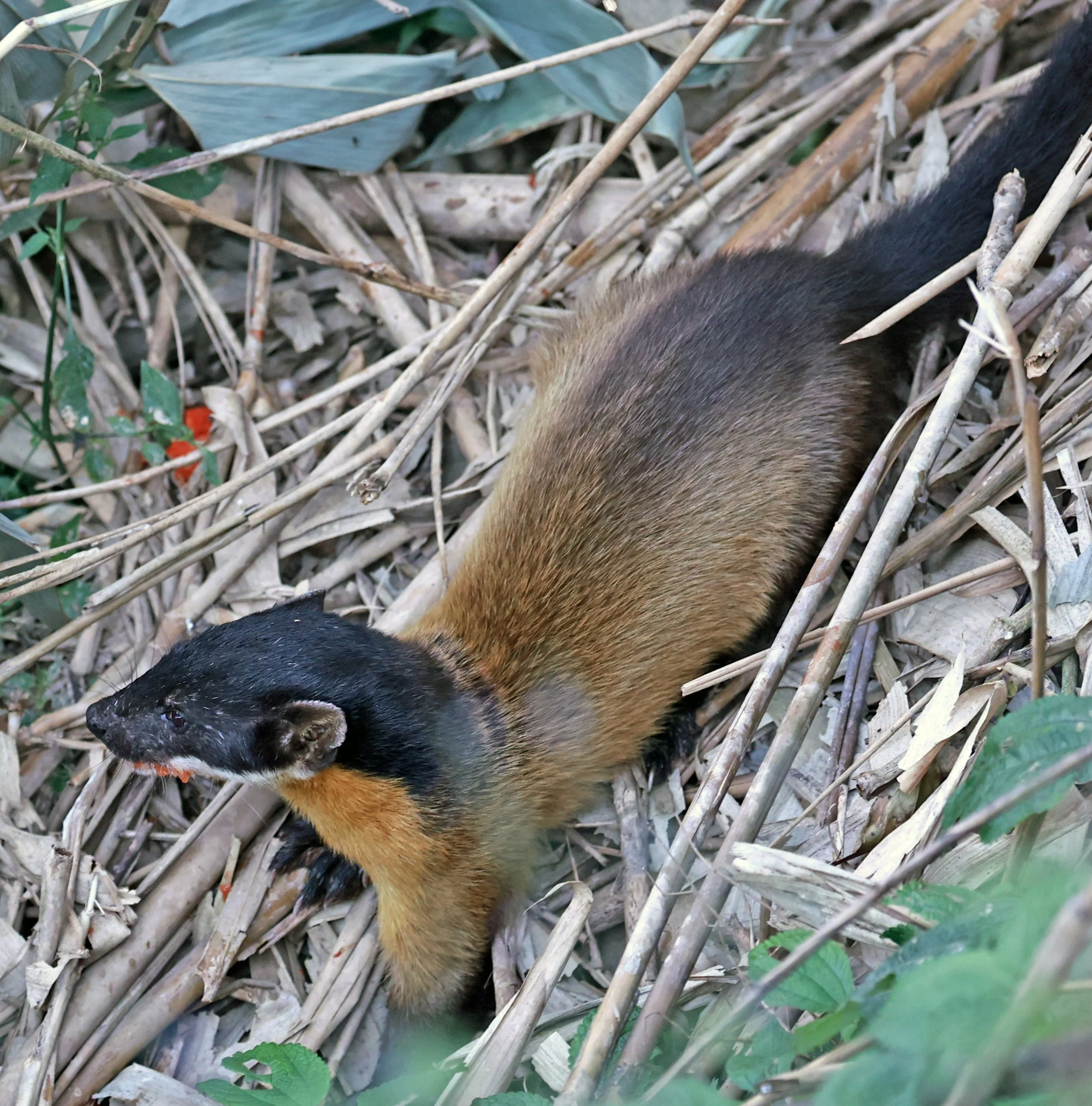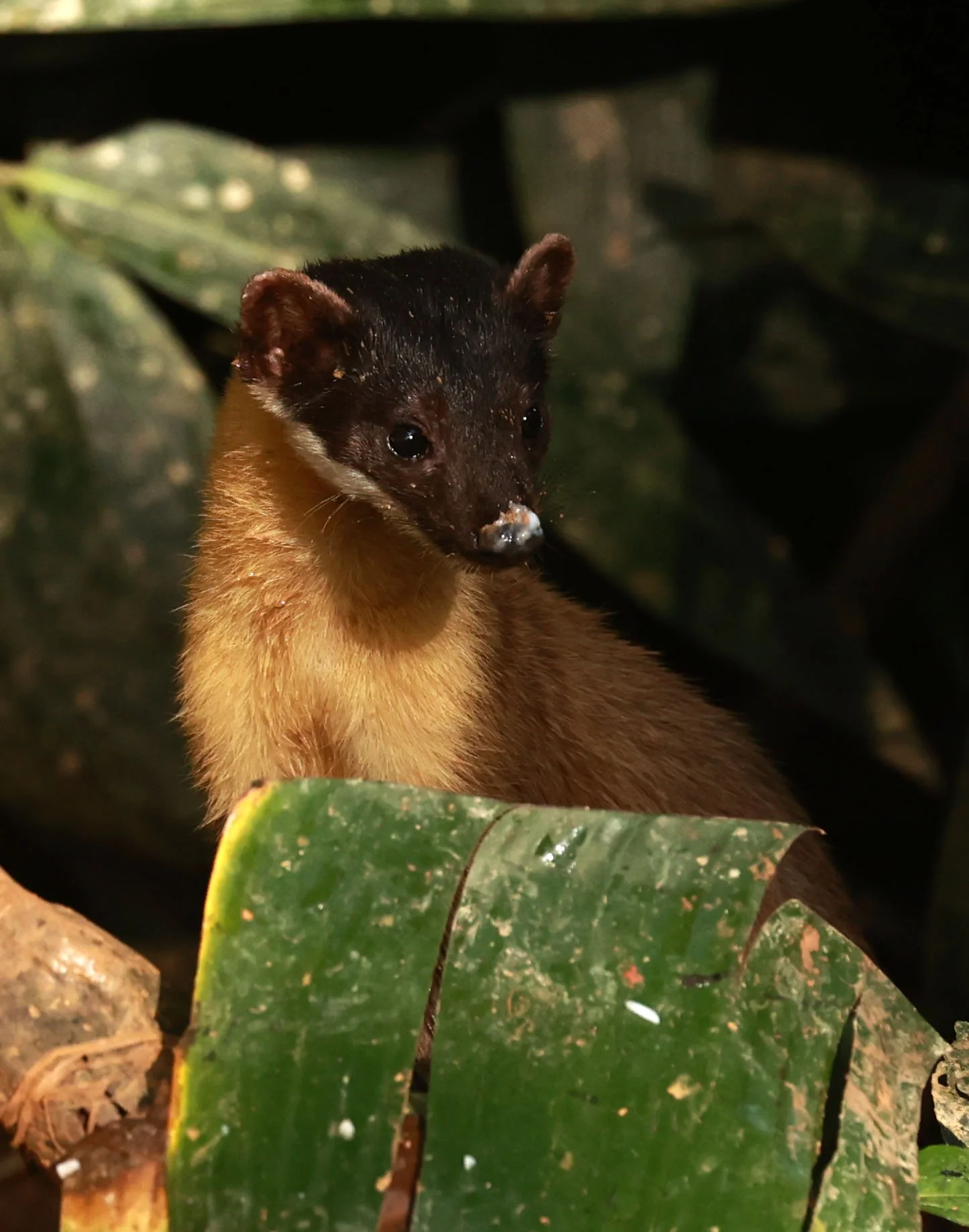
Yellow-throated Marten (Martes flavigula)
The Yellow-throated Marten (Martes flavigula) is a marten species native to Asia. It is listed as Least Concern on the IUCN Red List due to its wide distribution, evidently relatively stable population, occurrence in a number of protected areas, and lack of major threats.
The yellow-throated marten, also known as the kharza and chuthraul, is the largest marten in the Old World, with the tail making up more than half its length. Its fur is brightly colored, consisting of a unique blend of black, white, golden-yellow and brown. It is an omnivore, whose sources of food range from fruit and nectar to small deer. The yellow-throated marten is a fearless animal with few natural predators, because of its powerful build, its bright coloration and unpleasant odor. It shows little fear of humans or dogs, and is easily tamed.
The yellow-throated marten has relatively short fur which lacks the fluffiness of the pine marten, sable and beech marten. The winter fur differs from that of other martens by its relative shortness, its harshness and its luster. It is also not as dense, fluffy and compact as that of other martens. The hairs on the tail are short and of equal length over the whole tail. The summer fur is shorter, sparser, less compact and lustrous. The color of the pelage is unique among martens, being bright and variegated. The top of the head is blackish brown with shiny brown highlights, while the cheeks are somewhat more reddish, with a mixture of white hair tips. The back of the ears are black, while the inner portions are covered with yellowish gray. The fur is a shiny brownish-yellow color with a golden tone from the occiput along the surface of the back. The color becomes browner on the hind quarters. The flanks and belly are bright yellowish in tone. The chest and lower part of the throat are a brighter, orange-golden color than the back and belly. The chin and lower lips are pure white. The front paws and lower forelimbs are pure black, while the upper parts of the limbs are the same color as the front of the back. The tail is of a shiny pure black color, though the tip has a light, violet wash. The base of the tail is grayish brown. The contrasting marks of the head and throat are likely recognition marks.
Yellow-throated Marten at Phanoen Thung Camp in Kaeng Krachan National Park, Thailand.
The yellow-throated marten holds extensive, but not permanent, home-ranges. It actively patrols its territory, having been known to cover over 10 to 20 km in a single day and night. It primarily hunts on the ground, but can climb trees proficiently, being capable of making jumps up to 8 to 9 meters in distance between branches. After March snowfalls, the yellow-throated marten restricts its activities up treetops. Estrus occurs twice a year, from mid-February to late March and from late June to early August. During these periods, the males fight each other for access to females. Litters typically consist of two or three kits and rarely four.
The yellow-throated marten is a diurnal hunter, which usually hunts in pairs, but may also hunt in packs of three or more. It preys on rats, mice, hares, snakes, lizards, eggs and ground nesting birds such as pheasants and francolins. It is reported to kill cats and poultry. It has been known to feed on human corpses, and was once thought to be able to attack an unarmed man in groups of 3 to 4. The yellow-throated marten may prey on small ungulates. In the Himalayas and Burma, it is reported to frequently kill muntjac fawns, while in Ussuriland the base of its diet consists of musk deer, particularly in winter. The young of larger ungulate species are also taken, but within a weight range of 10 to 12 kg. In winter, the yellow-throated marten hunts musk deer by driving them onto ice. Two or three yellow-throated martens can consume a musk deer carcass in 2 to 3 days. Other ungulate species preyed upon by the yellow-throated marten include young wapiti, spotted deer, roe deer and goral. Wild boar piglets are also taken on occasion. It may prey on panda cubs and smaller marten species, such as sables.[4] In areas where it is sympatric with tigers, the yellow-throated marten may trail them and feed on their kills. Like other martens, it supplements its diet with nectar and fruit, and is therefore considered to be an important seed disperser.
The yellow-throated marten has few predators, but occasionally may fall foul of much larger carnivores; remains of sporadic individuals have turned up in the scat or stomachs of Siberian tigers (Panthera tigris altaica) and Asian black bears (Ursus thibetanus). There is a report that a mountain hawk-eagle (Nisaetus nipalensis) kills an adult yellow-throated marten.
The yellow-throated marten occurs in Afghanistan and Pakistan, in the Himalayas of India, Nepal and Bhutan, the Korean Peninsula, southern China, Taiwan and eastern Russia. In the south, its range extends to Bangladesh, Myanmar, Thailand, the Malay Peninsula, Laos, Cambodia and Viet Nam.
In northeastern India, it has been reported in Arunachal Pradesh, Manipur, Himalayan West Bengal and Assam. In the Sunda Shelf it occurs in Borneo, Sumatra, and Java. In Pakistan, it has been reported in different valleys of Gilgit Baltistan, Deosai National Park, Shandur National Park, Phander Valley, Ghizer Valley and Danyor Valley.

































































































































































































































Yellow-throated Marten seen in Phanon Thoeng, Kaeng Krachan NP, Thailand







































































































































Yellow-throated Marten (Martes flavigula) Tangjiahe National Nature Reserve, Sichuan China




















